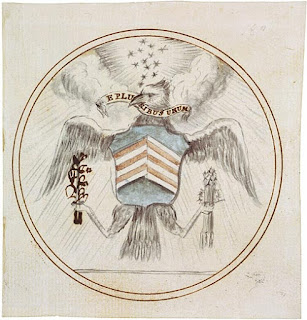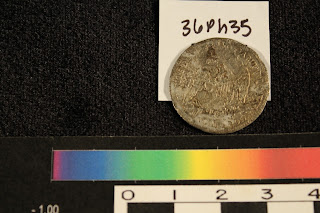Jack Mullen had planned to be a history teacher when he
returned from World War II, but instead shared his passion for history with his
own young sons.
The Pennsylvania Historical Commission (precursor to the Pennsylvania Historical and Museum Commission, PHMC) began an investigation at the Strickler site in 1931 under the direction of Donald Cadzow, then the State Anthropologist/Archaeologist. Since then a number of excavations have taken place by “curio collectors”, Society for Pennsylvania Archaeology (SPA) members and professional archaeologists. In 1967 Pennsylvania Power and Light Company became interested in purchasing a large swath of land that included the Strickler site. Their intended activities would eventually destroy the site. A mitigation plan to fully investigate and excavate the site prior to its destruction was developed and implemented in 1968, 1969 and 1974. These excavations and the culture history of the Susquehannock Indians are discussed in detail in Barry C. Kent’s book Susquehanna’s Indians.
The Strickler site is the largest of the Susquehannock sites encompassing over 10 acres within its stockade, which exhibited European style bastions on at least two of its corners.
Based primarily on evidence of postmolds associated with longhouses,
cooking hearths and trash middens it is estimated that over 4,000 people lived
there between 1645-1665 (Kent, 1989: 364). This site is considered the peak of the Susquehannock
population and represents “the height of Susquehannock political and economic
power” (Kent, 1989:367). It is believed
to be the only Susquehannock village at this time encompassing two previous
villages within its walls. Kent paints a
mental picture of everyday life at the Strickler site on page 367 of his book:
The competition over the fur trade with the Iroquois to the
north and the English in Maryland made this a contentious time; and at least
once, in 1663, Strickler was attacked by more than 800 Iroquois. The increased interactions with Europeans led
to an increased dependence on their trade goods as they gradually began to
replace native made items leading to a decline in native craftsmanship. By 1665
sickness and warfare had shrunk the population significantly, the fields and
woodlots were exhausted and it was time to move on to establish a new village.
It is this site where the Mullen’s recovered these significant artifacts exemplifying a time when cultures were colliding mixing old native ways and ideas with “new” European concepts in an effort to adapt and survive.
 |
| Strickler Cord-marked pottery noting the classic Strickler flared and rounded rims |
 |
| Brass Kettles were replacing native pots during this time and the two occurred in almost even numbers at the Strickler site |
 |
| Iron artifacts: scissors, bracelets, a key and a knife/spear; examples of European goods replacing native tools and accessories |
 |
| Brass artifacts: bracelet, button, brass patch with rivets and a spoon |
 |
| A variety of glass, catlinite/slate and shell beads |
All of these artifacts and more were graciously donated by
the Mullen family to The State Museum of Pennsylvania where they can be
preserved and studied. This collection
also complements and enhances our existing collection from the Strickler site. These privately held collections can
contribute significantly to our understanding of the past and we appreciate and
acknowledge their contribution to our archaeological heritage. If you have a similar collection that you
wish to donate please contact the staff of our Section to make donation
arrangements. If you would like to learn
more about this site, or any of the Susquehannock sites please see Barry Kent’s
Susquehanna’s Indians or peruse past
TWIPA blogs for more information.
Kent, Barry C.
1989 Susquehanna’s Indians. Anthropological Series,
Number 6. Pennsylvania Historical and Museum
Commission, Harrisburg.
White, Sharon
2001 To
Secure a Lasting Peace: Diachronic Analysis Kent, Barry C.
1989 Susquehanna’s Indians. Anthropological Series,
Number 6. Pennsylvania Historical and Museum
Commission, Harrisburg.
White, Sharon
of Seventeenth-Century Susquehannock Political
and Economic Strategies. PH.D. Dissertation,
Pennsylvania State University.











